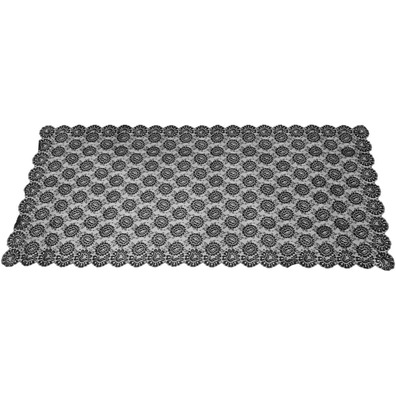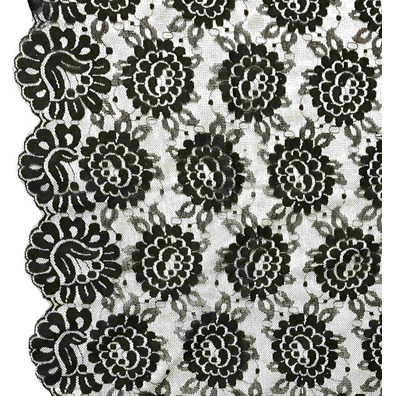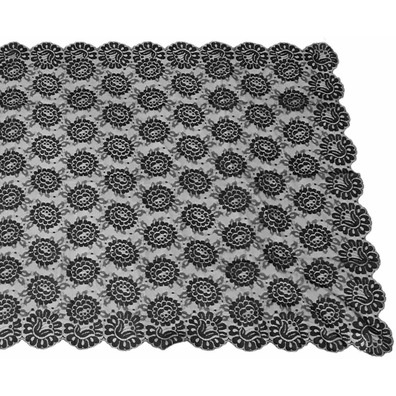Black mantilla Easter | Rectangular
30,00€
Taxes includedCatholic product in stock. Products ready to be shipped. You can check the approximate delivery time during the purchase process.
Black mantilla Easter | Prices
- Black mantilla for Holy Week with a rectangular shape.
- Made of 70% rayon and 30% polyamide.
- Spanish blanket 180 x 55 cm.
- Machine woven and embroidered.
- Decorated with two types of different floral shapes in the outline and in the central part.
- For sale other black mantillas for Easter .
The color black during Easter
Eater is a time of great importance for the Catholic religion. During these days we Catholics celebrate the Passion, Death, and Resurrection of Christ, we remember how Jesus gave his life for the forgiveness of sins.
Holy Week consists of a series of events that lead to the Easter Triduum, the climax of the Christian liturgical year.
The colors black and white are the main protagonists of the Easter Triduum. These two colors carry a great symbolic charge, representing two opposing concepts.
On one hand, the color white represents life, light, the presence of Christ resurrected among us. White is the principal color of Easter Sunday or Resurrection Sunday.
On the opposite end is the color black representing death, darkness, and gloom, the absence of Christ. Black is the most prominent color on Holy Thursday and Good Friday, days on which the Passion and Death of Jesus are remembered.
The black mantilla during Holy Week
The black mantilla is a traditional garment that has been used for centuries in Spain during Holy Week. Women usually wear it in processions and other religious ceremonies.
The black mantilla is typically worn on Holy Thursday and Good Friday, days on which the Passion and Death of Jesus are remembered. Despite being a widespread practice, there are numerous local customs that must be taken into account when selecting attire for these dates. Thus, for example, there are localities in which it is not recommended for women to wear a mantilla during Good Friday.
It is advisable to know the dress protocols of the brotherhoods and/or local authorities to avoid errors in dresses and accessories.
The mantilla as an accessory for the manola outfit
Manolas are women who participate in Holy Week processions. Their most characteristic feature is that they often dress completely in black as a sign of mourning and sorrow for the death of Christ.
Some authors argue that this tradition began in the Holy Week processions of Madrid in the 19th century. Today, the tradition of women dressing as manolas has spread throughout the Spanish geography, being especially important in the center and south of Spain.
The dress protocol for the manolas is very similar across all regions, although it may have some variations following the customs of certain localities or brotherhoods. Generally, the manola outfit incorporates the following elements:
- Simple black dress with long sleeves and without neckline.
- Skirt below the knee.
- Hair usually gathered in a low bun.
- Comb.
- Black Spanish mantilla.
- Medal of the Easter brotherhood.
- Rosary.
- Discreet makeup.
- Somber footwear with low heels.
- Black stockings.
- Black gloves.








